Web
and Book design, Copyright, Kellscraft Studio 1999-2008 (Return to Web Text-ures) |  (HOME) |
| THE LAKES AND
STREAMS OF MAINE THE Indian
names of
lakes, streams, and mountains in Maine are not as difficult as they
seem, being
pronounced as they are written. At our first knowledge of these names,
they
furnish not a little humorous comment. At length, however, their
pleasing
syllables become poetic, and stand for the sweet, wild districts where
they
nestle or flow, as waters, or dominate the landscape in noble
elevations. Though the
number
of the Maine lakes is legion, their total area is only sufficient to
render
them charming. A lake of great extent loses the beauty of winding
waters,
broken by many peninsulas. There seems to be a very decisive line of
opinion
drawn between those who regard these lakes as sources of power, and
those who
regard them as lures for the traveler. If the state insists, as it
easily may,
that any lands flooded shall previously be carefully cleared of timber,
there
is no reason why the beauty of Maine should not be conserved, together
with its
waters. In no case should the flooding of a timbered country be
permitted. It
can work no hardship to insist on the clearing of timber. The product
ought to
come near balancing the cost. Every one of us ought to stand strongly
against
the unnecessary ugliness of dead timbers, forlorn monuments of
carelessness or
greed, amid the slack waters formed by dams. The mountains
about
the Rangeley Lakes are not so lofty, yet afford, in conjunction with
the lakes,
scenes of noble splendor. One compares the Rangeleys with the English
lake
country. That country also we have pictured and admired. We feel that
the
Rangeley region is not a little superior in its beauty as well as in
its
extent. The Rangeley forests are more interesting. These regions must
be
considered as a unit with New Hampshire scenery. To the west of Umbagog
one is
often disappointed by the absence of pine trees near the margins of our
Maine
lakes. Whenever we do find good forest specimens they are likely to be
in a
tangle, so that we may view them only in a general way. Here and there
we find
birches have been left growing on the very shores, for which they have
a strong
affection. The mountains of Maine and New Hampshire seen from Upper
Kezar Lake
in Lovell are to be commended as affording a lake setting of grandeur. About Lake
Meddybemps in Washington County, the hills, while of much beauty, do
not rise
to the dignity of mountains. The fine mountain shores about Camden and
Mount
Desert are unique in this northeastern American coast in that mountain
and sea
come together. The inlets between the mountains and Mount Desert some
one
called the only fiords in America. The statement seems to us very much
forced.
Certainly on the Pacific Coast in Puget Sound there are fiords greatly
surpassing in grandeur any of those in Norway, but it is not necessary
to look
so far away. The waterways about Wiscasset appeal to us as true fiords.
There
are other inlets on the Maine coast where swiftly-descending hills meet
deep
water. However that may be, we should not overlook one region at the
expense of
another. As one sails up the Penobscot and sees below one, opposite
Bucksport,
Mount Waldo and Treak Hill, the latter rises directly from the water's
edge. He
finds at the entrance of Marsh Bay a slope sufficiently high and rapid
to be
defined as a fiord. In fact the sail through the Penobscot in daytime
or on the
borders of morning or evening unrolls grandeurs never to be forgotten
by those
who love the hills. They are much higher and bolder than those seen on
the
Kennebec, which gains its attractions through the intimate and tender
green
slopes. The great part of the district in Maine, from somewhat west of
Augusta,
well on for one hundred and fifty miles due east, is a country just
escaping
the dignity of mountains. It is spattered over with fine hills very
often
wooded. If one would patiently and slowly thread the farm roads through
this
region he would be in a state of continual joy as one graceful contour
after
another unfolded itself. To return to
the
features of the shore and mountains, let us say that the outlook from
Maiden's
Cliff on the north side of Megunticook is of surpassing beauty, such
that we
should be at a loss to match it in our country. While the terrifying
and
majestic elevations of the Cascade Range are lacking, there is here on
Maiden's
Cliff an intimate outlining of lakes below, and, looking southeasterly
to the sea,
all together affording the highest satisfaction. We were happy in our
day's
visit to this spot. The view is well known and everywhere used in
pictorial
advertising literature. It is apparent, however, that visitors to this
point
are not as numerous as they should be. The trail is easy for a mountain
trail,
and is a climb of only twenty-five minutes even allowing for intervals
of rest.
The approach is from a farm house on the lake side, which must be
sought out by
inquiry since no signs appear. Ascending the main peak and looking
seaward, a
wholly different view is unfolded. At our feet lies Camden Harbor, and
well
easterly are the elevations of Mount Desert and northeasterly flows
along the
Penobscot River. There is a healthful, and what we hope not a too
sharp,
rivalry between Camden and Mount Desert. Each has its peculiar
beauties, and
they are sufficiently different to set off one another. The loftiness
of the
Camden Range is as impressive, viewed from the sea or from the lakes,
as any of
our eastern mountain scenery.
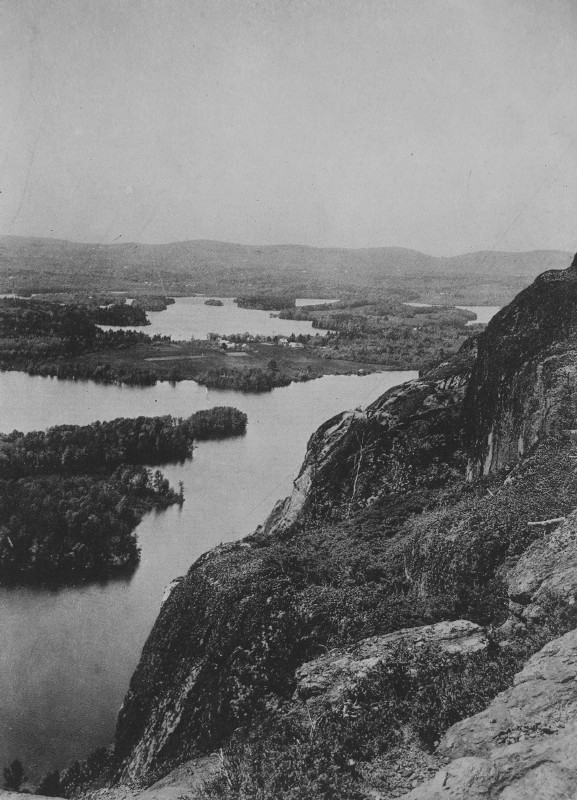 FROM MAIDEN'S CLIFF - CAMDEN 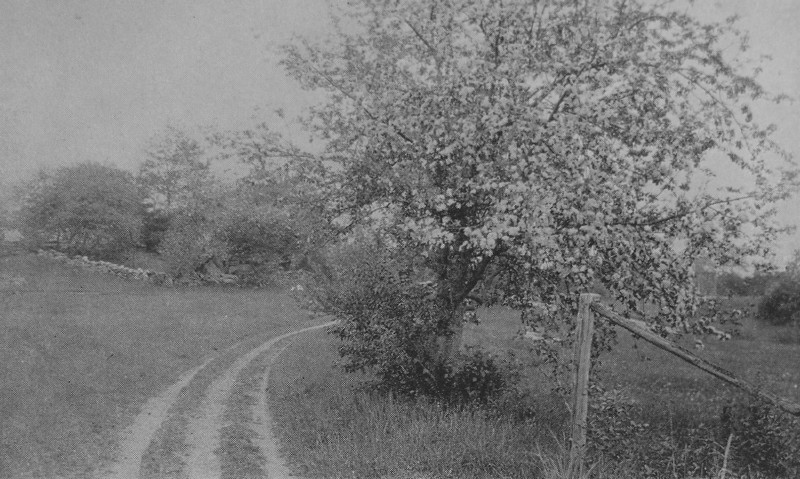 AROUND THE BLOSSOMS - WOOLWICH 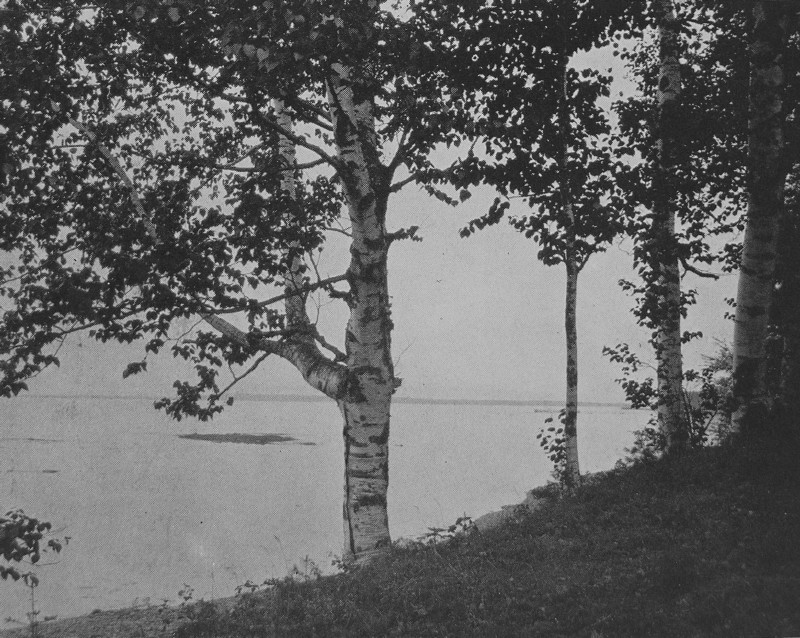 A BELFAST COVE 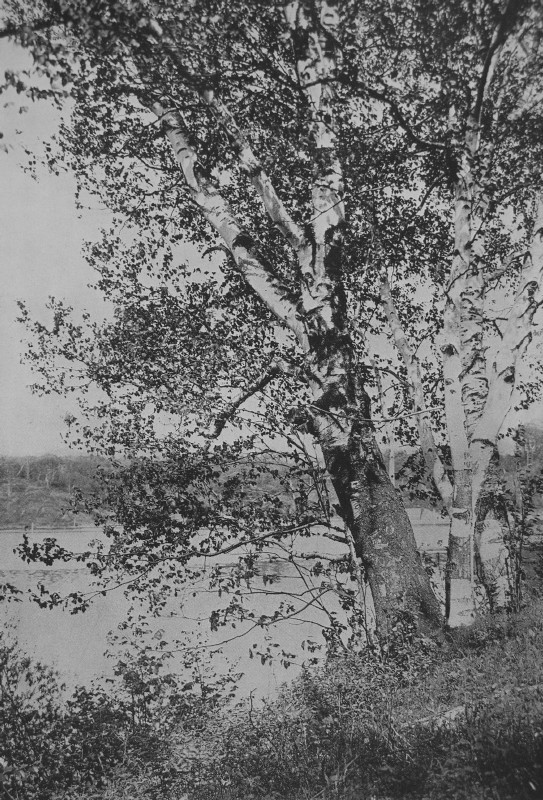 KENNEBEC BIRCHES - HALLOWELL 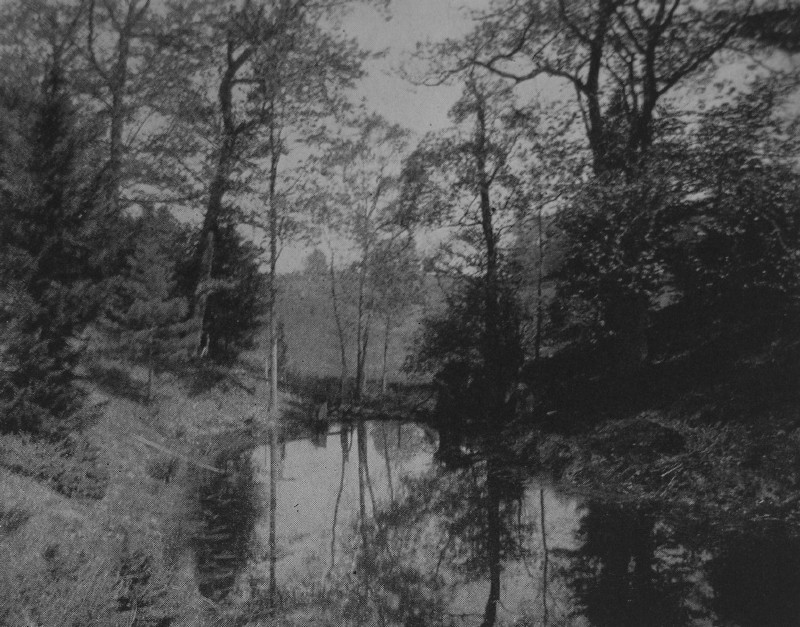 A WISCASSET WATER NOOK 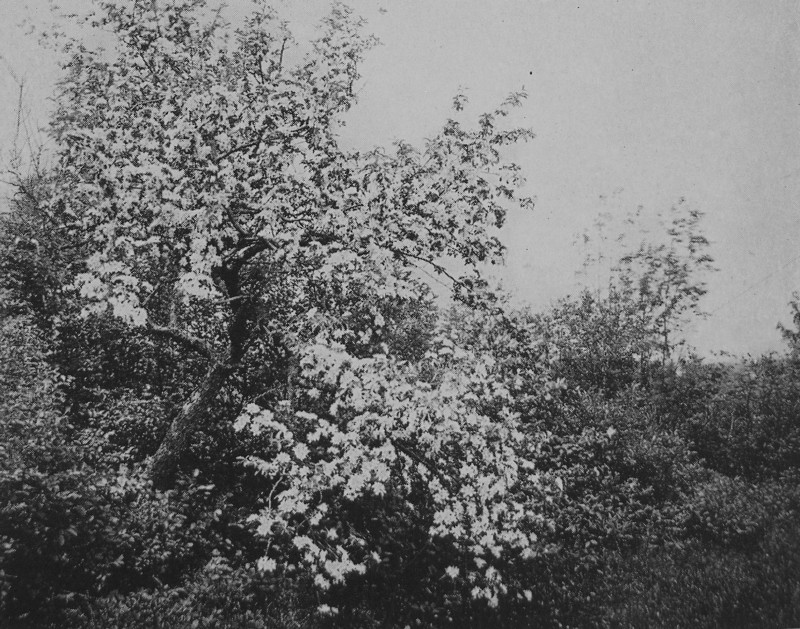 A GRACIOUS HEDGEROW 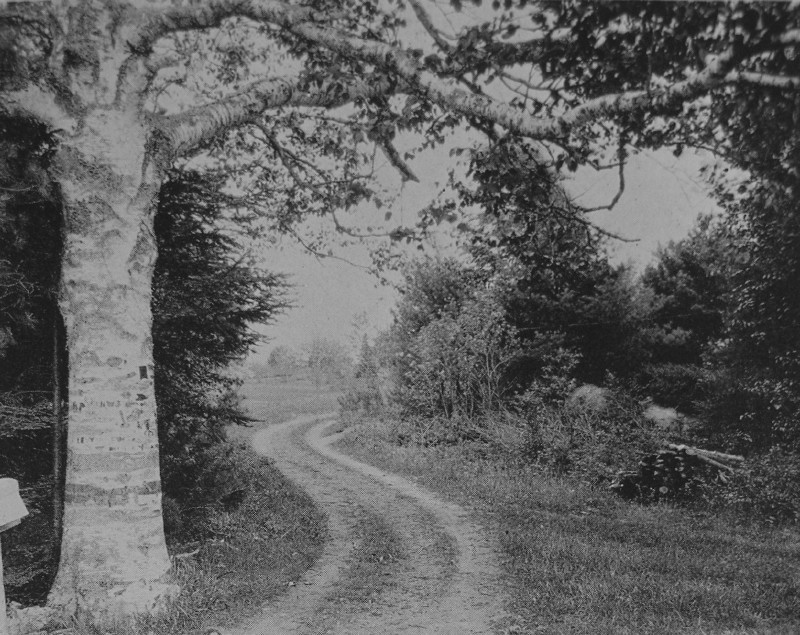 A MAINE FARM ENTRANCE - WOOLWICH ROAD 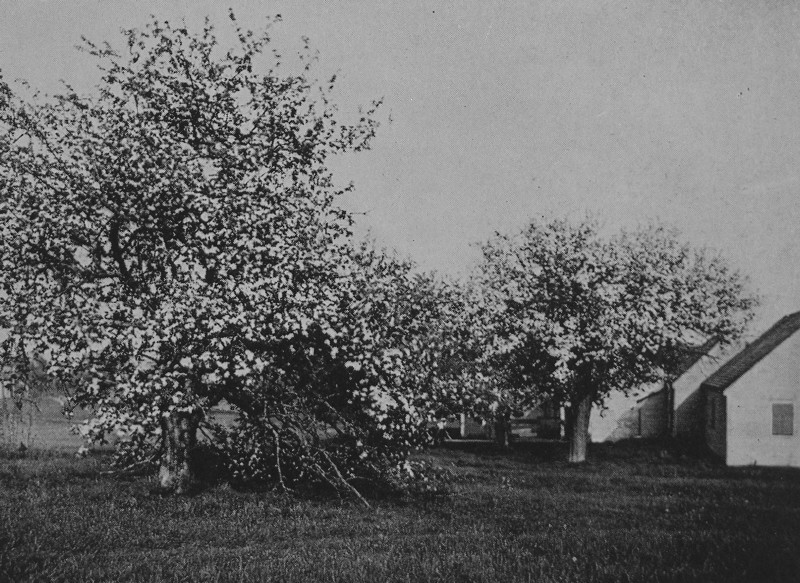 COTTAGE ORCHARD - BATH-WISCASSET ROAD 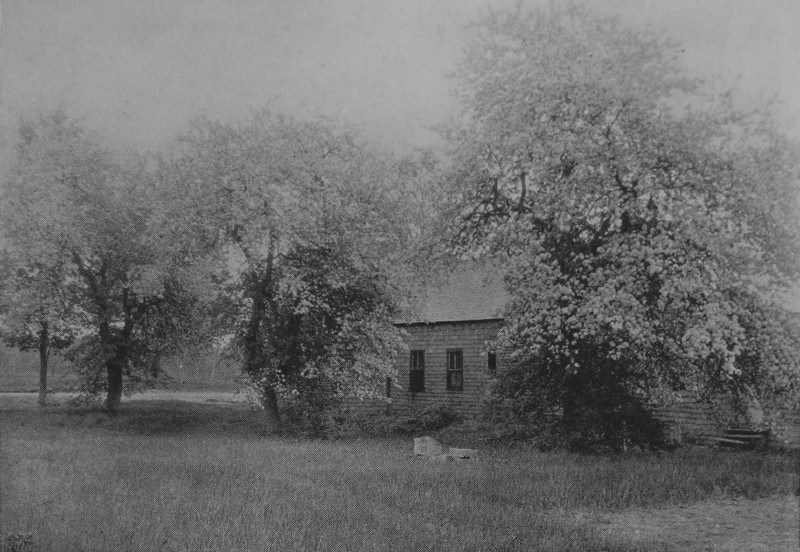 A HONEYMOON RETREAT - DRESDEN 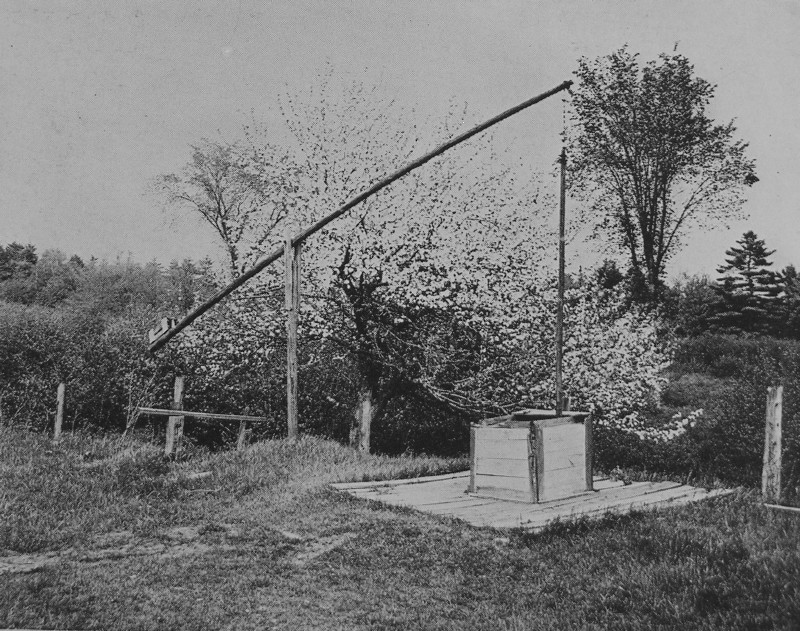 A WELL SWEEP BACKGROUND - LISBON 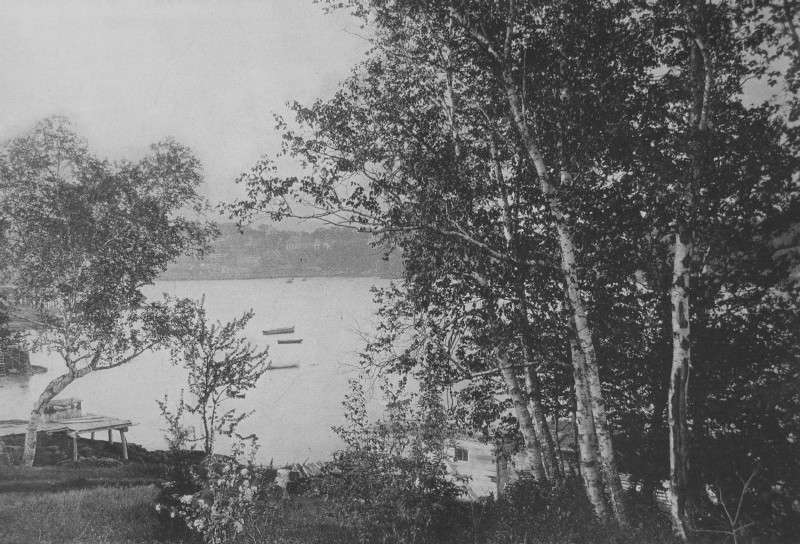 A BLOSSOMY CURTAIN - ROCKPORT 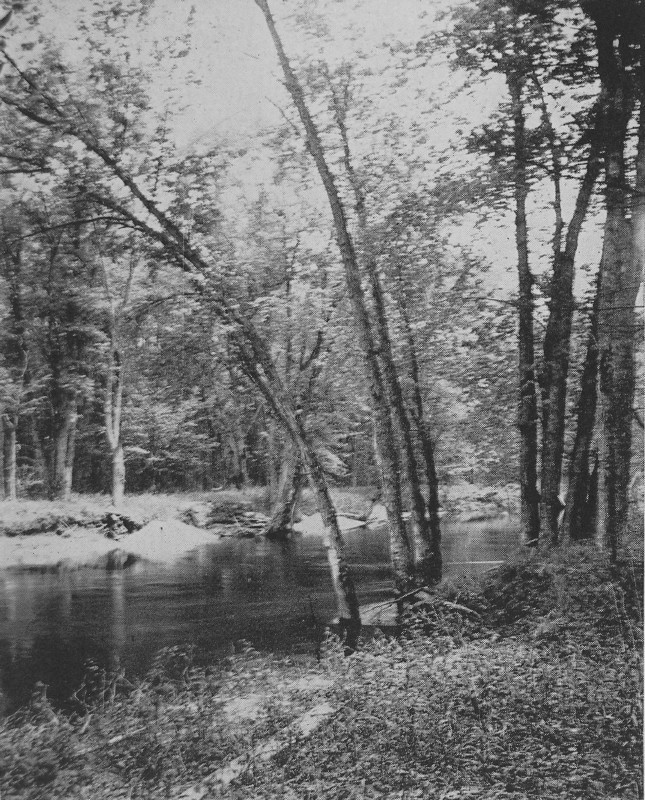 SACO BOWS - FRYEBURG 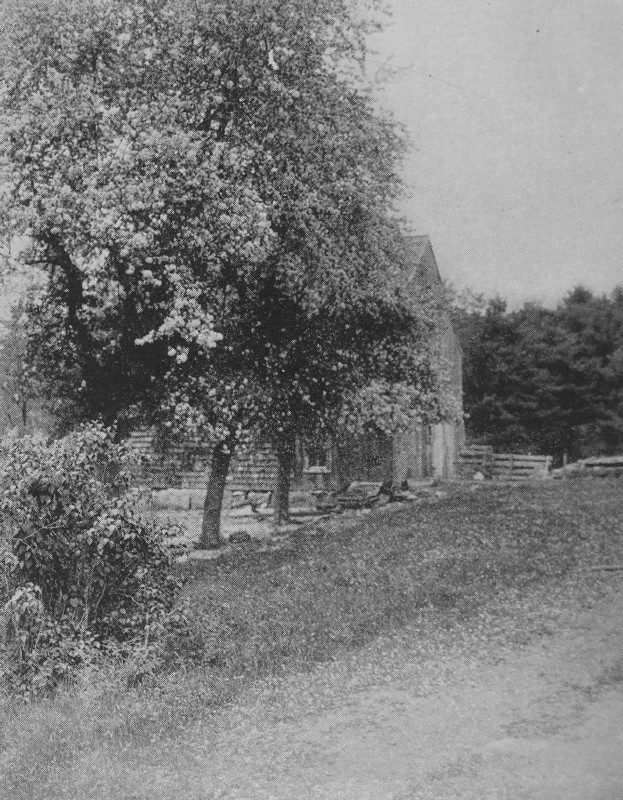 THE OLD BARN GABLE - LOVELL
At Mount
Desert, in
the setting aside of a portion of the island known as Lafayette
National Park,
and the beginning of a road to the greatest elevation on the island, we
have a
very satisfactory undertaking and accomplishment. Happily it has not
been too
late in America to secure under national control a great many of our
country's
landscape glories. The beauty of Somes Sound and of the fine cliffs and
headlands of the various parts of Mount Desert has been rather fully
disclosed
in our travel literature. The island scene on Mount Desert that most
pleased us
was a foreground of a field of daisies beyond which lay a lake and
Mount Green.
On the Southwest Harbor shore we also found a daisy field sloping
sharply down
to the beach, with evergreens beyond. On the east shore of the island
is the
impressive cliff which is named Cathedral Rock, from the fact that an
arch
opens behind its foremost buttress. In the sea there is an endless
charm as one
wanders along the beach at low tide. We were obliged to climb down a
rugged way
since we happily came upon these cliffs at high tide. As a rule the
tide evades
us. They tell us that there are two high tides in a day, but our
experience
seems to contradict astronomy. These fine cliffs, with the water
breaking upon
them, are of course more impressive than when one walks upon the beach.
The
caves formed by the erosion of softer rocks are called The Ovens, and
are
curious massive cavities in the cliffs. Mount Desert has the peculiar
distinction of being at once the summer home of leaders in the
financial and
intellectual world. It would perhaps be a betrayal of Mount Desert to
state
that its summer mildness is hurt by occasional fogs. But who in the
reeking and
torrid July in the great city would not welcome a cool fog? The
contours of
Mount Desert are in general not so bold as those about Camden, but a
mountain
island ever holds its own fascination. This portion of Maine is without
doubt
destined to become completely occupied by seasonal dwellers. If they
prove to
have the wisdom not to tame the scenery it will be a most happy
outcome. For
ourselves we can never see the appropriateness of city lawns among the
cliffs,
rapids, and mountain streams. The vista of
Mount
Desert, as it spreads itself before a traveler on the road from
Ellsworth
eastward, and especially in Sullivan, suggests somewhat a scene in the
Greek
Isles only that our elevations are beautifully wooded. The mountain
districts
of Maine are almost always rich in lakes, and this affords more than
half their
charm. There is almost no end to the cottage sites to be found made up
of a
hill slope, below which lies a lake. We observe usually that cottages
are
huddled on the very bank of a lake, and not seldom where the highway
dust is
wafted against them. The joy of a lake is as much in looking down upon
it as in
sailing over it. Since nature has provided so many admirable hill
curvatures in
Maine it is high time that their excellence should be recognized. It often
happens
that an entrancing feature of lake scenery consists of the large and
small
islands that dot the larger lakes of Maine, from the mere breaking of
the surf
by a bold rock to the extent of many acres finely wooded. These
islands, or at
least several score of them in the Maine lakes, are still calling to
the seeker
for independence, quiet, and beauty. As seen from above, these islands
appear,
especially in a quiet day, inexpressibly beautiful. We almost fear that
the
universal use of motor-cars may prevent the development of homes upon
these islands.
Human nature, however, is not easily modified, and whatever means of
locomotion
there is in store for us, we may safely believe that an island home
will always
be attractive. Perhaps in the general development, the islands will
come into
their own again, especially since the invention of the amphibious
airplane.
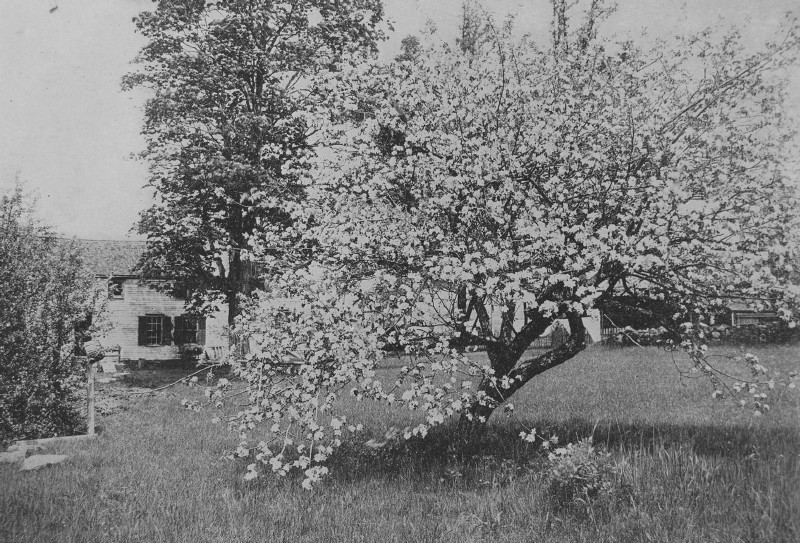 BACK DOOR BLOSSOMS - DRESDEN 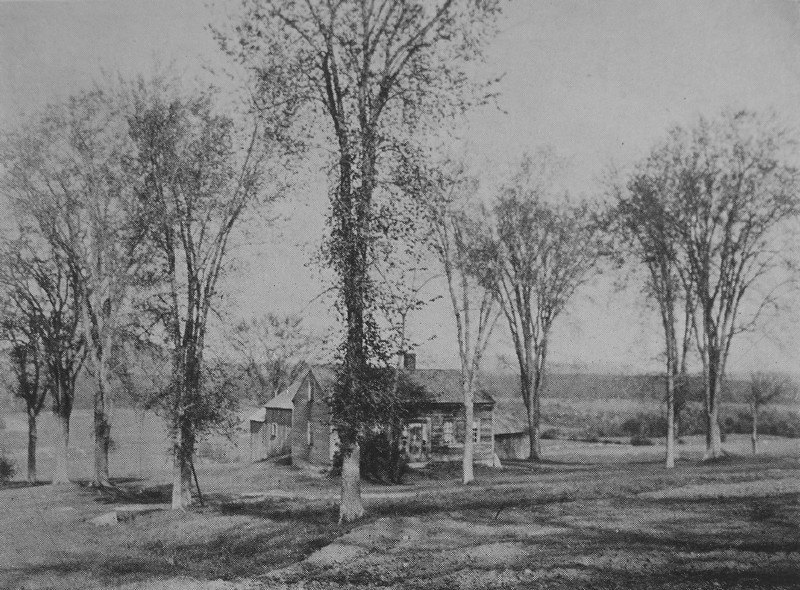 A COTTAGE SQUARE - LOVELL 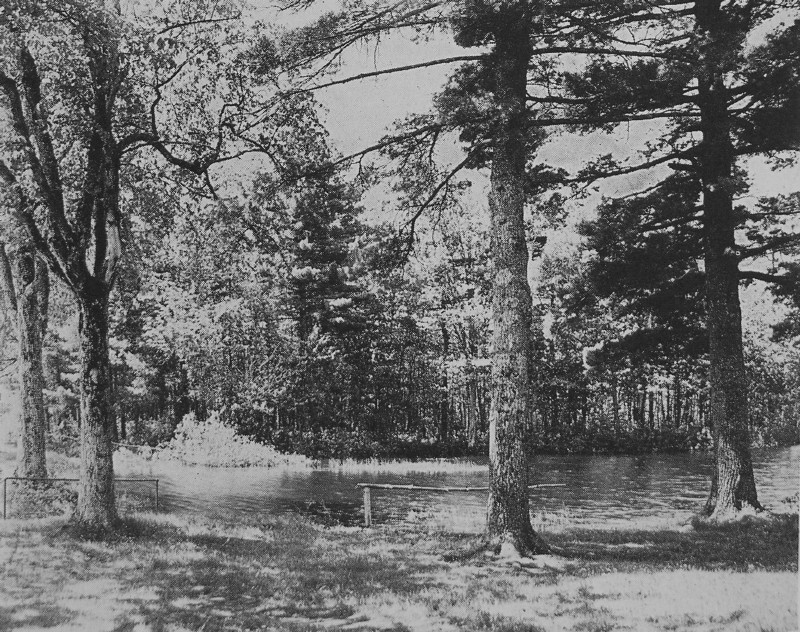 CRYSTAL COVE - GRAY 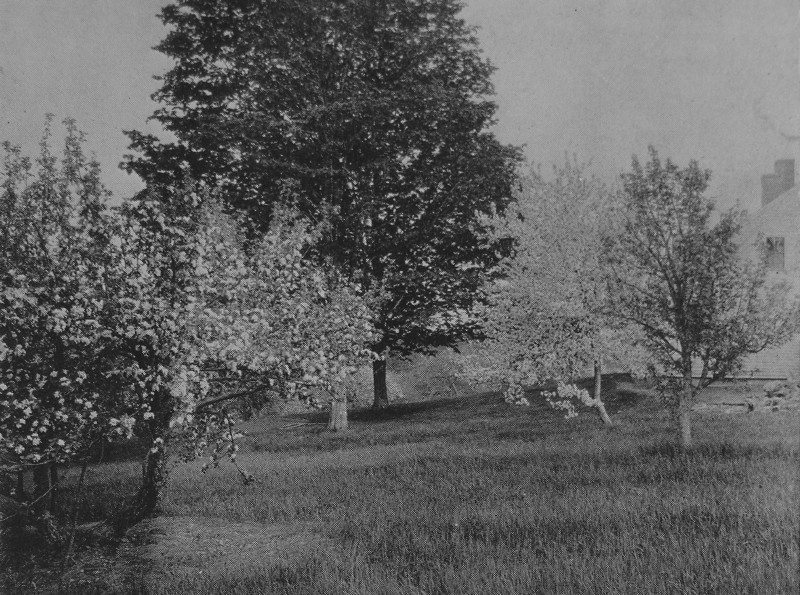 A COUNTRY PARSONAGE - MANCHESTER 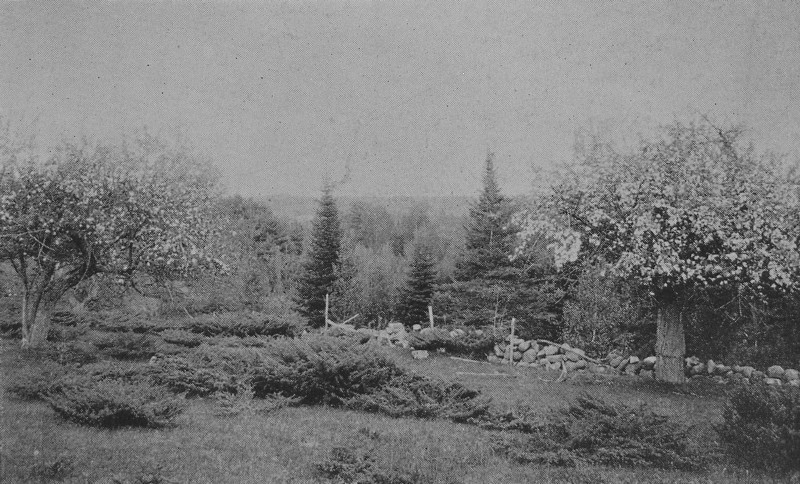 AN ABANDONED ORCHARD - MANCHESTER 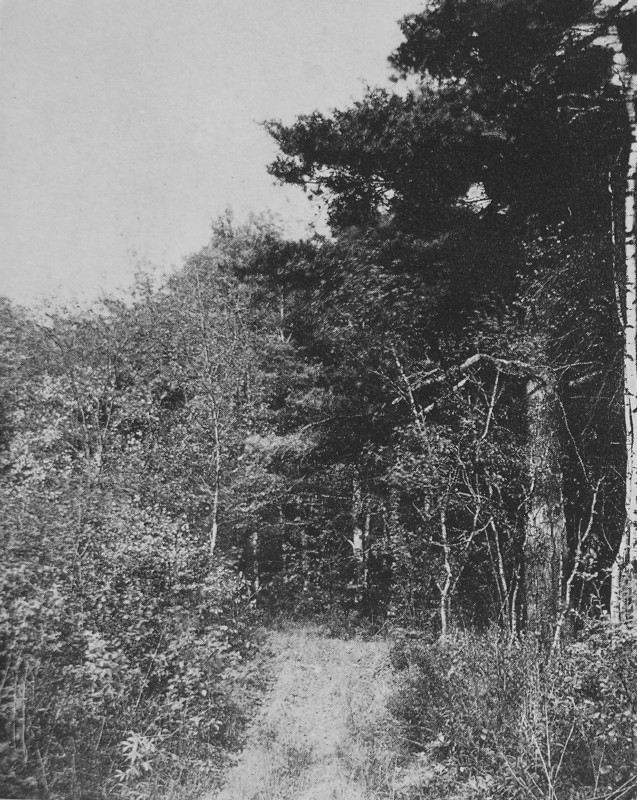 ENTERING THE FOREST - NEAR WALDOBORO 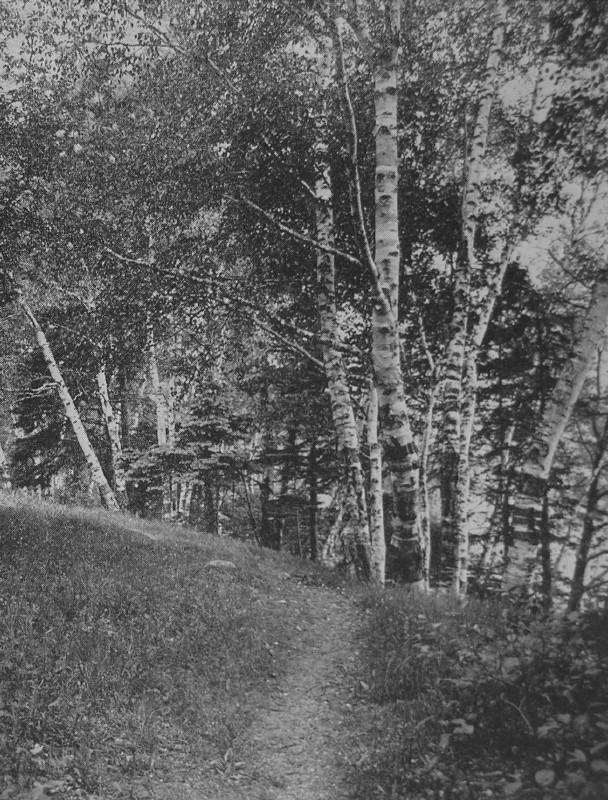 THE PATH - CAMDEN OLD MAINE MILLS MAINE is the
paradise of miniature mills. There is a little valley, beloved of our
boyhood,
where a tannery and a saw mill followed one another on a stream with an
interval only sufficient for the little reservoirs between. One can
scarcely
take a half-hour's run on Maine roads without encountering one or more
such
mills or sites where they once stood. They were seldom operated the
year
through, but only at the time of high water. This time coinciding with
that in
which farm labor was least demanding, the mill was a convenient outlet
for
energy. The winter was spent in the forest preparing the logs, the
early spring
in sawing. These little water powers have lapsed into disuse, owing to
the
modern specializing in the matter of labor, so that one man does one
thing all
the time, and loses the pleasure and the development connected with
variation
of labors. What will become of the little old dams is a question that
nature is
answering for herself. Occasionally, in a rampant freshet, she gives
them a
shoulder thrust, and the freed waters of the stream babble over their
little
cascade as they have done for ages. An occasional structure of great
strength
still impounds a placid pond, on the margins of which the rushes grow. At the old
Coombs.
Mills in Augusta, on a gently shelving shore, baptisms used to occur.
This mill
has survived, and become more important than of yore. We do not connect
the
sanctifying of the waters with its prosperity. we are far from
believing that the
righteous are always well looked after on this planet. Another mill
has
been for long a source of tan-bark banking, used to protect the farm
houses in
winter. Here and there an old mill-dam has been utilized for esthetic
purposes,
to decorate the grounds of a summer place. One and another of the
better of
these ancient reservoirs has been purchased by power companies, to be
drawn
upon in seasons of drought. Some of the old dams have sunken to
puddles, owing
to the cutting away of timber. Largely, such mill ponds are anybody's
property,
in the sense that they are unused and await the coming of someone to
set them
to work again or to beautify their banks. In the olden
time
the mill was often the only lively spot in a country town, when the
farmers
were bringing in their logs or drawing away their sawed product. The
delicious
odors of the boards as they came from the saw, or the fragrance of the
yellow
meal that sifted down into the receiving tray, linger yet in our
nostrils. It was a period
of
small enterprises and slow wheels. There was no Minneapolis hum at the
old
mill-dam. At North Berwick, Ebenezer Hobb had an old water mill which
was famed
for the fine quality of the meal it turned out, but in another respect
it was
like the mills of the gods; it ground slowly, so slowly that the meal
drizzled
down in a minute stream. A farmer from afar came one day with four
bushels of
corn to grind. Ebenezer got busy. He descended to the lower regions,
and
jiggled around with the water gate. He came up and jiggled with other
controls.
At last the old wheel began to growl, like a rheumatic brute. After a
short
eternity the farmer inquired, "How you
getting along, Ebenezer?" "Oh, we're
doing pretty well. What's your hurry?" Another
interminable interval, then the farmer breaks out, "Ebenezer,
I've got an ox at home that will eat that meal faster than you can
grind
it." At that
Ebenezer
flared up, and retorted, "I'd like to
know how long he could eat it?" "He could eat
that meal," said the farmer, "till he starved to death!" CANOEING IN
MAINE IT is natural to suppose that Maine, a State of waters, would develop the finest form of the canoe. This supposition is borne out by the fact. The Indian canoe of birch bark, a rather fragile affair, has been supplanted by a canoe with close set, thin, cedar ribs, and cedar strakes, all covered by canvas. Such a canoe, twenty feet long, weighs about ninety pounds, and is ample for three people with their dunnage. More can be accommodated if necessary, but three is the right number for comfort. This canoe is not too heavy at the carries for two men, the third toting dunnage in a pack. The shape of
this
canoe is closely modeled on the lines of the Indian canoe of bark, with
a round
bottom rather flattened, and with the ends coming together in a quick,
sharp,
graceful curve. The shape is the embodiment of an Indian dream. we may
think
that the horns of the moon and the curves of the graceful birch tree,
and the
crescent beaches of the Maine lakes gave the suggestion. The result at
least is
perfection. The canoe combines more than any other human creation the
practical
and the ideal, reminding us of "the perfect woman, nobly planned."
Fur lightness, for grace, for mobility, for its perfect adaptation to
its
purpose, no device of man has ever equaled the canoe. It is the home of
the
woodsman for the greater part of the year. Even at night he draws it on
shore
and, upturning it, has a roof above him. It is his home and companion.
More
than any other inanimate thing, it is lovable and beloved. We stroke
its curves
as we pet a fine horse. It is not without good reason that the canoe
has
appealed, in picture, song, and story, to the minds of those who
discovered it
full-grown and beautiful, in the hands of the adept Indian, who evolved
it. To
be at once a thing of perfect beauty and perfect adaptability to use,
is true
of few human creations. Its very lightness and elasticity preserve it
from
harm, where a clumsier craft would be smashed. Its very resilience and
fragility make it durable. Like the human character it has the power to
rebound
after a blow, and to bob up serenely, ready for the next bump. Henry
Ward
Beecher once made a very telling simile, regarding the resilience of
the ferry
slips. An analogy based on the canoe would have supplied him with a far
more
apt and telling illustration. It is highly
significant that the old guide gains an affection for his canoe, and
thinks it,
despite all the battering it has received, better than a new one. Here
and
there a strake has been broken. Again and again the canvas has been
punctured.
Never mind. After a few deft repairs, and one more coat of new skin,
otherwise
orange shellac, the voyageur launches forth again, happier than before,
because
his own feeling and skill have entered into the craft that bears him.
It is a
monument to his ability as a boatman, and every scar is a kind of
notch-stick
history of his experiences in the rapids, from season to season. Like a
child,
none too perfect, it is the best for him because it is his. In winter
he renews
it, in the other three seasons he paddles it. It is at once his living
and his
life. It combines poetry and practicality, so that, even if he reads
with
difficulty, and has not heard of Keats, his life is nevertheless an
idyll. Maine is
especially
happy, indeed preeminent, in the range that may be covered in a canoe,
with an
occasional short carry just sufficient to emphasize the rest and
comfort of
launching again. A seat in the bottom of a canoe is a post of
observation, more
joyous and more profitable than the throne of a king. The world passes
in
review before one. The fish leap about one. The birds twitter as one
passes.
The marks on the stones show the range between high and low water. The
mosses
on the trees and the direction of the branches indicate the prevailing
winds.
The keen and experienced guide reads a long history and indulges in
sure
prophecy, as the canoe glides along. It is a story not read in history,
but
none the less worth while and delightful. The canoe has
more
to do with the development of history in America than has the
battleship. The
canoe might well be taken as the symbol and seal of Parkman's wonderful
histories. For the canoe was the pioneer of European civilization in
the west,
even more than the prairie schooner or the Conestoga wagon. When we see a
canoe, we live again our childhood with Cooper. This slight, airy
affair, begun
by the Indian, and finished by the even subtler skill of the white man,
is on
its way again to the forefront of American life. There are doubtless
more
canoes now than in the days of the Indians, and their number is
constantly and
deservedly increasing. Contrary to the supposition of the unknowing,
the canoe
is a safe craft. One may, indeed, overset it, but the finest forms and
implements used by man require delicacy of control, and when so
controlled they
are safer than more clumsy implements. It takes little practice to gain
as
great assurance of safety in a canoe as upon the land. One is far more
likely
to catch his foot in a root than to catch his keel on a rock. The use
of a
canoe encourages a certain litheness, combined with a daintiness of
touch,
which reacts upon the mind of the person who acquires these faculties,
and
gives a sense of power. One feels almost the assurance of a bird in the
sky. A
construction which is at once a vehicle and a home, which may be used
to sleep
in or under, to float in quiet water or to dash through cascades, is an
achievement into which doubtless many centuries have entered. The waters of
Maine
are competed for by the lumbermen, so that until we get into the real
backwoods, we do not have the streams to ourselves with the canoes. But
even
so, it is highly entertaining and sometimes amusing to observe the
adroitness
of the paddler in overcoming obstacles. Mr. Thornton Burgess, the
notable
naturalist and writer for children, was telling the author of his
experience
with an Indian paddler as they approached a boom. Mr. Burgess asked
what his
guide would do about that. The reply was, "When I holler, you paddle
like
——." When they neared the boom, each put his
strength to his paddle, and
the canoe gracefully mounted the obstacle like a hurdler. The writer,
in
canoeing on the Penobscot, was carried through a mass of pulp wood,
over which
the paddler, working alone, easily shot. On one occasion, when we
thought there
was no lumber near, we felt a rumbling. When we asked Roberts what it
was, he
said, "Oh, we are just on rollers." We bumped about for a long time
among sticks, some of them quite formidable, but with not half the
annoyance
caused by the mosquitoes. Upsets in rapids do occur, but they are so
rare that
every one hears about them, and the guide is always chagrined, as it is
a point
of honor with him to avoid such mishap. He fears the laugh of his
fellows more than
anything else. The guides acquire an almost uncanny skill in riding the
rough
water, and in knowing where they are safe. Of course well-known rapids
are shot
by them so often that they feel as much at home as in a parlor
— probably more
so. The delights of
the
night camp serve to perfect the experiences of a canoe trip, like a
luscious
bit of ham between sandwich slices. All the joys in life being
emphasized by
contrast, the evening is never so delightful as when it closes an
active day,
nor is the day ever so delightful as when we leave the morning camp.
All foods
are tasty, though it should be understood that the best is not
considered too
good to take along. Canoeing with a camera has marked advantages over
gunning.
One is more likely to bring home spoils, and those spoils are more
attractive
than the eyes of a dead beast. Further, in spite of the number of
cameras, it
is rare that one is used in the woods. The catch with a camera is more
likely
to be original than any catch of fish or game. Though many
indulge
in rhapsodies regarding the delights of the forest, most human beings
love a
crowd. Indeed, when among solitudes we often feel a bit selfish that we
should
have several square miles to our individual selves. A new train of
reflections
is suggested. The uninhabited parts of the earth are still very
extensive. Its
surface, if we ignore the water, which we decidedly are not doing at
the
present time, still affords some fifty acres to a family! Practically,
however,
if a man wants room, there are so many ready to resign it to him that
he may
easily acquire several square miles for the price of a diamond of
moderate
size. A certain gentleman has been adversely criticised because he
acquired an
island many miles in extent. Since no one else wanted it, we see no
reason to
object to his ambition. Some may enjoy canoeing where there are many
canoes.
Give us the wild! Let us move over the mirrored surfaces where the call
of the
moose or the loon is the only break in the celestial silence. There are
stretches
of hundreds of miles in extent in Maine, like the Allagash River trip,
during
which one scarcely sees a human being. Yet the sense of loneliness
never
descends on a true canoeist. The canoe, in
fact,
is the only available means of seeing Maine over a great part of its
extent.
Some years ago, we contributed an article on the fitting up of an old
street
car with a canoe slung in the clerestory. By negotiation the car was
taken in
tow to interesting points, and there derailed, and the canoe made use
of. Since
that time the motor car has made much more elastic a similar plan. By
carrying
a canoe thus on a specially constructed body, one may live on a motor
car with
day trips by canoe. We commend this suggestion to those who would like
to do it
first and report. It is an adventure that we propose entering upon at
the first
opportunity. When the newness of motoring passes, Americans may return
to the
water as the more pleasing and the safer recreation. The water is much
softer
to fall upon than are stone roads. Canoeing for
man
and wife, or for a tourist and his guide, offers such a variety of
attractions
that it must increase, if, indeed, the spirit of freedom still stirs in
the
blood of Americans. Three-quarters of the state of Maine is an area as
perfect
as any in existence for this incomparably attractive recreation.
Aroostook,
Piscataquis, Somerset, and Penobscot counties in the north, Washington
county
in the east, Kennebec in the center, and Cumberland and Oxford in the
West,
possibly in the order in which we have named them, offer the widest
series of
attractions. To us the streams and the small lakes are not only most
beautiful,
but in other respects most alluring. We would, however, not convey an
impression that a long or a strange trip is safe without a guide. The
very
independence and freedom of spirit which induces men to make canoe
journeys,
also sometimes induces them to venture too far and to depend wholly on
their
own wisdom. This is just as dangerous as it is to buy antiques without
advice,
or after advice. On a canoe journey, one should frankly dispense with the usual paraphernalia of civilization, and dress precisely as a woodsman does. This remark is especially pertinent to footwear, including heavy, home-knit socks. Otherwise what might be a delightful journey may be very annoying. Those who must keep all the finical aids of the city will not enjoy a canoe journey. Beyond the comfort of a shave, and a dip in the summer streams, one should think of nothing personal. 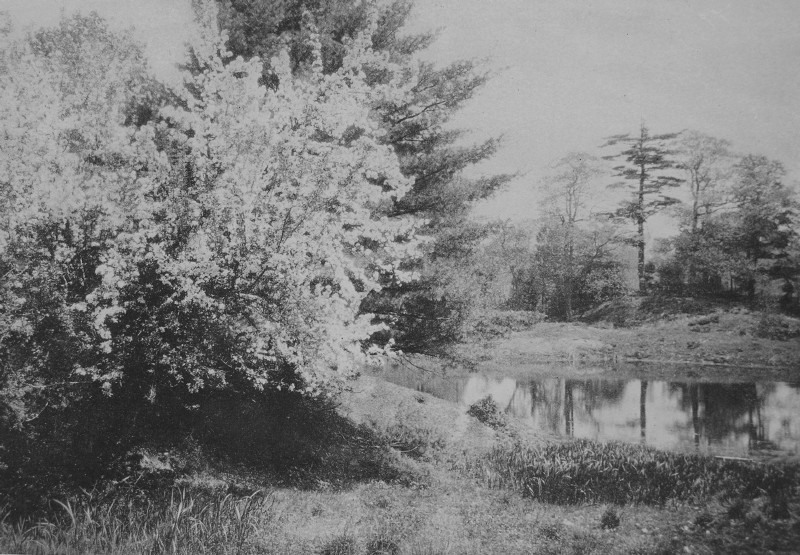 MAINE IN SPRING - WISCASSET 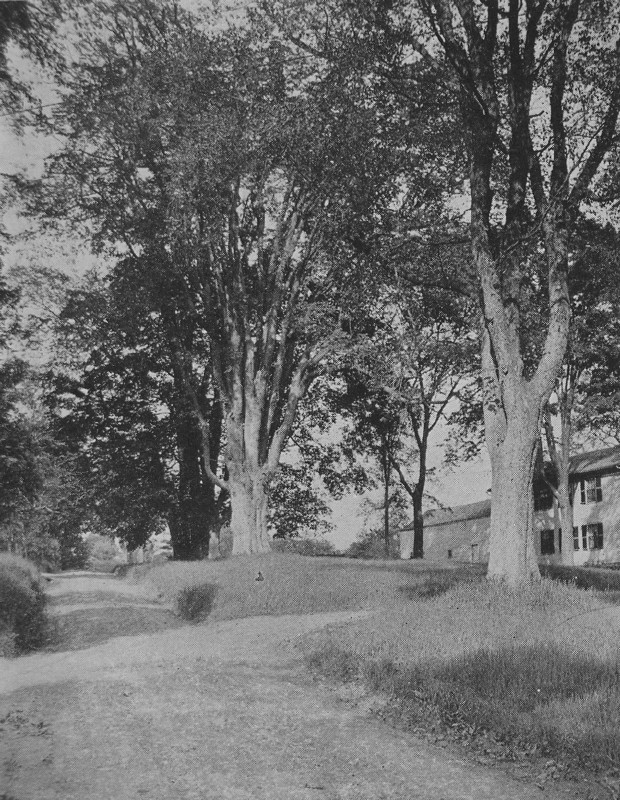 GREAT ELMS OF RANDOLPH 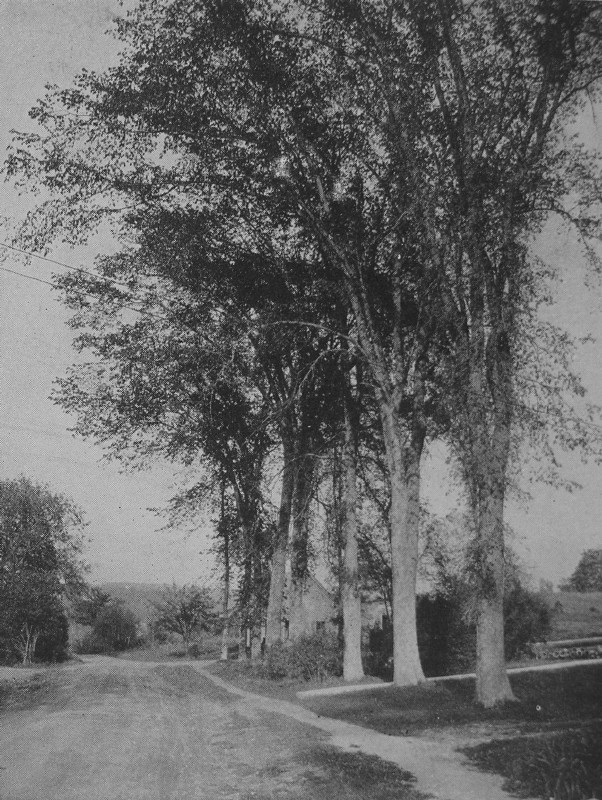 A CAMDEN ELM ROW 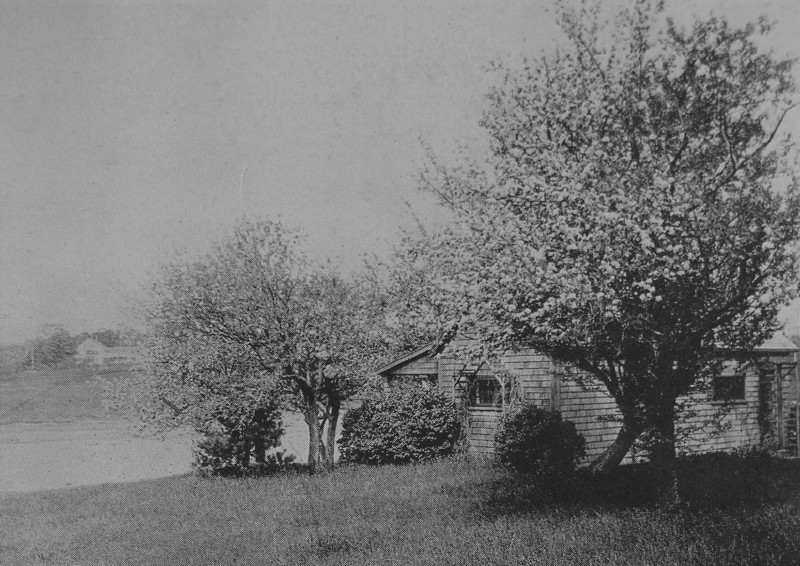 SEAWARD - NORTH EDGECOMB 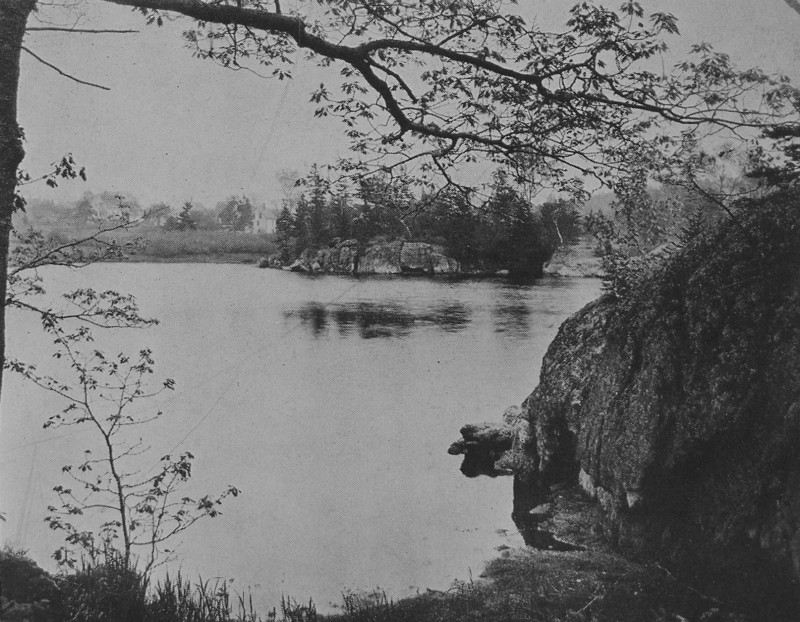 UNDER THE OAK BOUGH - EAST BOOTHBAY 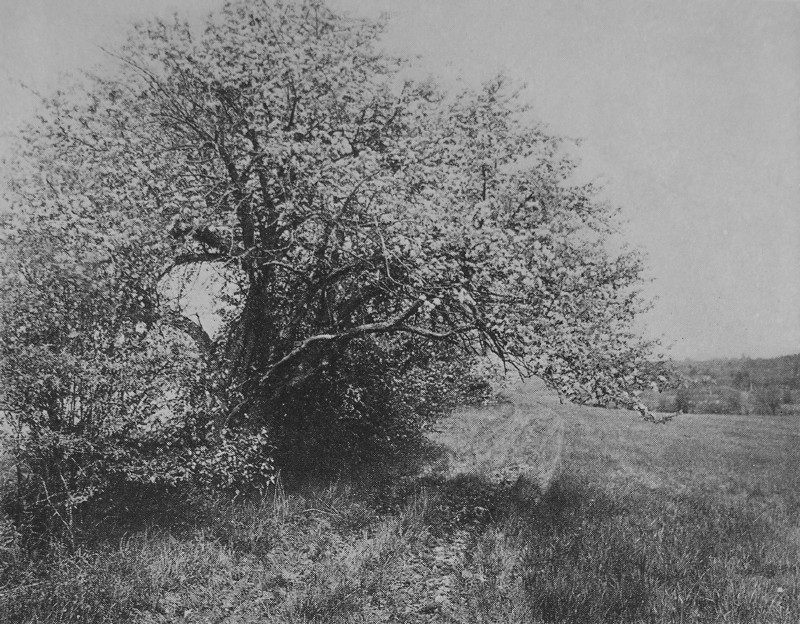 OVER THE FIELD ROAD - DRESDEN 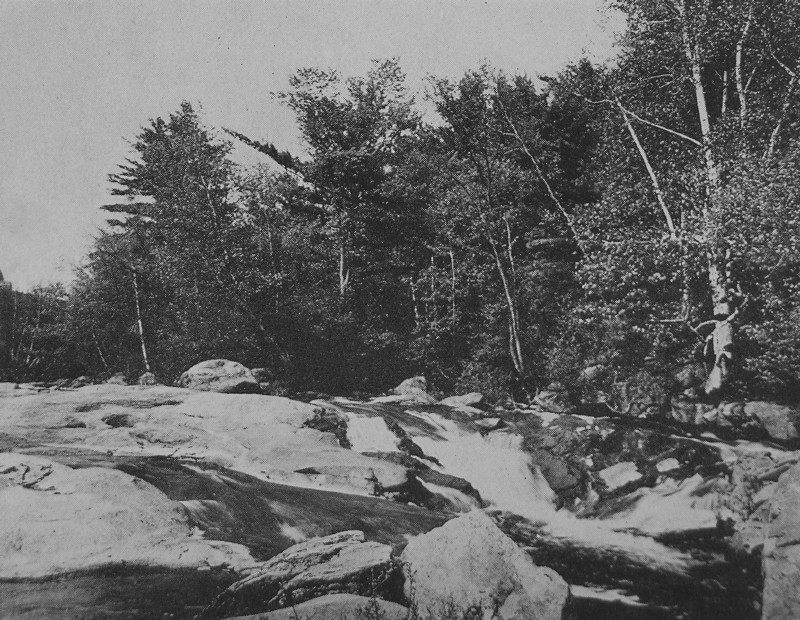 SWEET WATER CASCADE - WALDOBORO A great
surprise
awaited the writer, who found that in the open he could tramp three
times the
distance that he could walk in town. Dwelling beneath the sky is the
only true
elixir of youth. A trip of this sort derives additional attraction from
a
knowledge, at least in a moderate degree, of the trees and shrubs and
flowers.
The little creatures of the wood, and the game one occasionally comes
upon,
increase our pleasure. One confession,
however, we have to make, humiliating though it be. Always in country
journeys
we take a stock of blank paper, to enroll the thoughts that rush upon
us.
Always all the paper is brought back as blank as at the beginning. The
rushing
thoughts are drowned or blown away! They seem very important at the
time, but
while a black fly is crawling through one's hair, or the glory of a
summer
cloud is overhead, how can one stop to write? Except to a few geniuses
like
Thoreau, whose memory was perhaps phenomenal, the woods are not
productive of
literary achievement. Even artists in oil, if the truth is to be blazed
abroad,
frequently whisk away, when there is a knock at the door, the
photographs of
the scenes they are "painting from nature." |